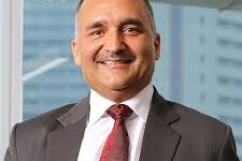- Home
- Entrepreneur Speaks
Entrepreneur Speaks
Indian Railways is one of the largest organizations in the world employing over 1.4 million employees located across the length and breadth of our country. Every day, Indian railways carries over 25 million passengers and over 3 million tons of freight and is truly the life line of the nation.
Railways is a network industry with high capital investment in the form of fixed infrastructure , notably railway stations, tracks, points and crossings, signals and wayside equipment in addition to the overhead equipment, electrical substations and transformers. Railway network expansion projects have long gestation periods and require highest levels of planning, project management and co-ordination across several functions. Before a line can be constructed, preliminary and detailed engineering surveys, geospatial and geological studies need to be conducted so that a stable and technically and financially viable track alignment can be identified. If this is not done carefully, projects can delayed for decades and this can result in huge time and cost overruns. Once the railway line has been constructed, each of the assets are required to be maintained to the highest standards so that passengers and goods can be transported safely from the origin to the destination. Several of these assets require regular replacement because of the immense wear and tear that these are subjected to. So far, Indian Railways as been adopting scheduled maintenance and repair of these assets.
Railways systems also require rolling stock in the form of locomotives, passenger coaches, freight wagons and special rolling stock for maintenance and upkeep of railway assets. Today, through its captive production units, Indian Railways manufactures its own locomotives and well as passenger coaches. The life of railway rolling stock can stretch up to 35 years and that implies that regular repair and maintenance of the rolling stock is an extremely critical function. Unlike the fixed infrastructure, rolling stock has several moving parts which get subjected to constant wear and tear, heat and dust and mechanical and thermal stresses. Rollin Stock maintenance is typically undertaken in loco sheds and car sheds distributed across the country. In order to prevent and minimise asset failures, Railways undertakes periodic overhauls of its locomotives and trains at these maintenance depots.
Railway operations comprise of all activities related to safe and smooth departure, arrival and arrival of trains. It includes management of operating assets such as passenger stations and freight terminals but also ensuring that all rail assets are well deployed and well utilised. Maintaining a high fluidity of the railway system is the responsibility of the railway operations. In all these activities, an important task is related to ensuring that the line capacity is optimally utilised and trains run to their schedule.
Indian Railways runs about 8000 passenger trains and another 13000 freight trains every day and while the freight trains are introduced into the network based on residual line capacity available, passenger trains typically run to a timetable. Introducing a new passenger train in the system requires involvement of almost every department and is a highly complex activity. Not only does the line capacity have to be optimised, but also the availability of the right kind of locomotive and the passenger coaches, the passenger train crews and availability of platforms at the intermediate and well as the origin and destination stations is critical, apart from the commercial aspects of the decision. Time tabling is therefore a highly complex activity and requires a detailed planning to be undertaken.
Railways offer immense opportunities for technology incubation companies. With evolution of drones technology and remote sensing, it is possible to undertake complex rail alignment surveys over inhospitable terrains, and also utilise technology to monitor the progress of new lines as these are getting built. Drones have been deployed globally to evaluate the wear and tear and condition of tracks as well as railways bridges with good results.
Railway maintenance offers immense opportunities for big data analytics and AI. Typically, railways follow scheduled maintenance regime ; however, with the availability of different types of sensors, the reducing cost of data collection and transmission and the exponential increase in computing power, it is possible to build algorithms that can predict failures of critical components. This can help Railways to reduce the cost of maintenance even as they shift from scheduled or breakdown maintenance to predictive maintenance. While some work has been done in this field, there is immense scope for initiative in this area.
As already said, Railways is a network industry and a change event in one part of the network has a cascading impact on the entire network. At a strategic level, when an existing railway line is doubled, it can eliminate the local bottleneck and speed up train speed on that section; however, it can also create another bottleneck in another part of the network further upstream or downstream. At a tactical level, the impact of one failure on one part of the network can be felt as a ripple effect on several other parts of the network distantly located from the origin. Railways is therefore a very fertile ground for modelling tools – be it creation of operations research tools to determine how traffic must flow from origin o destination or be it simulation models for simulating railway traffic on a segment of the network. An associated opportunity is in the area of time tabling of trains and finding ways to optimise use of assets.

